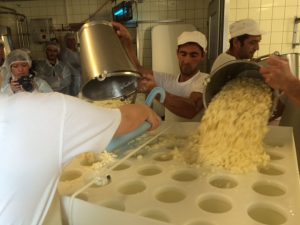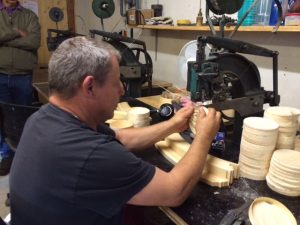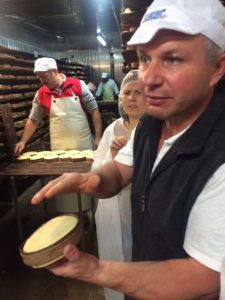This a monthly series which I have been publishing for years. You can subscribe here, to get the latest cheese delivered directly on to your screen.
It is quiet. Very quiet. The windows are open, but at first, to my urban ears, there is not a sound to be heard. But then I notice the distant sound of cow bells, their bearers munching away at the luscious grass of Switzerland’s southwestern outreaches. And if my hearing was better I might have heard the rattling of fir trees, of the Forêt du Risoux, one of Europe’s largest forests. If mine were supernatural powers, a lot of tic-toc of clocks and watches would have joined the chorus, and the smell of curd and cheese would have tickled my nostrils. Because I am in the Vallée de Joux, home of the spruce bound and boxed creamy deliciousness of Vacherin Mont-d’Or, to explore its story, meet its makers.

The holy trinity of the small valley one hour drive west of Lausanne are wood (that forest), cheese (that milk transformed into wares for less remote, lucrative markets), and watches (a combination of long winter days without cheesemaking, iron ore deposits and Huguenot immigrants’ skills). Yes, they are all here, the big brands you know from ads, James Bond movies and City bankers’ wrists. Fortunately the valley’s signature cheeses (depending on the season, the milk is either made into Vacherin or, during the summer, transformed into large wheels of Gruyère) are a little more affordable. And Vacherin in particular is a model of regionality.

Since the AOP came into effect in 2003, the sangle (the spruce rind that surrounds it) as well as the the wooden box it’s packed in have to be made locally, from local fir trees, épicéa, and the cheesemakers typically pool the milk from several local milk farmers, no further away than 20 kilometers. The invernal dairy workforce (not all local, it has to be said) swells to almost triple, as small, soft Vacherin demands more curd scooping, turning, brushing and boxing hands than large, hard Gruyère. But yield, turnover and price reflect this and everybody in the valley seems to be happy with the way things are.

I certainly was more than happy to watch the cheesemaking at the Hauser’s family laiterie, taste the soft, sweet curd straight from the copper vat, and find out how Vacherin acquires its signature ondulating top, so inviting a spoon to dip into its orange yellow rind and scoop out the creamy deliciousness underneath: the spruce cercle is cut with a sharp knife and made to overlap, the cheese squeezed into a box slightly smaller than its circumference. Left for another 10 days or so after this, its aromas tell you the story of that quiet valley, its pastures surrounded by fir trees, those people quietly working wood and milk. With a steady supply of Vacherin, I feel ready for fall and winter.
PS Yes, the French border is within walking distance, and yes, Vacherin is produced on „the other side“ as well. And (shh, don’t tell the good folks of the valley) le Mont d’Or or Vacherin du Haut Doubs it can be just as good as their Swiss brother.
This a monthly series which I have been publishing for years. You can subscribe here, to get the latest cheese delivered directly on to your screen.
